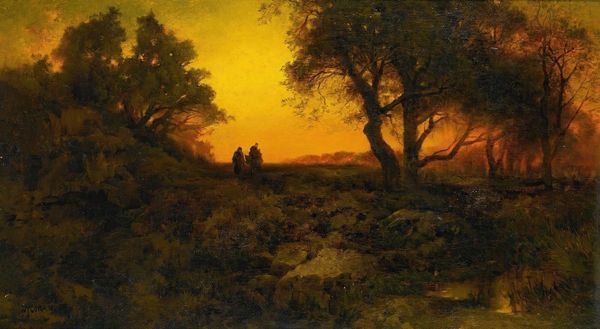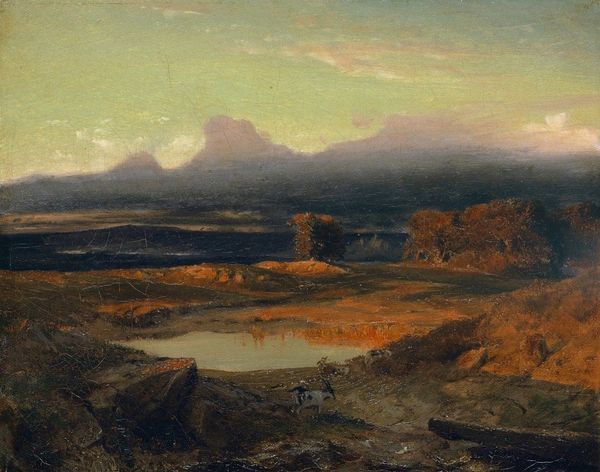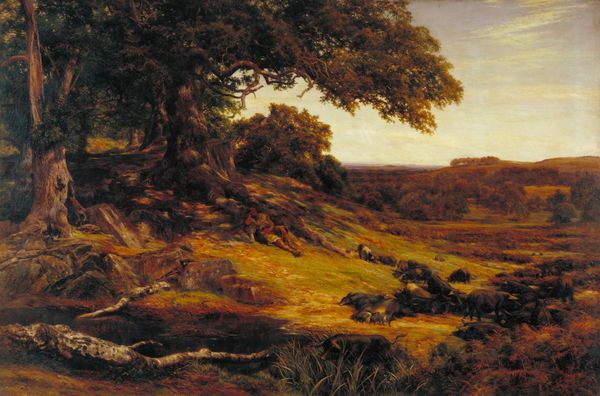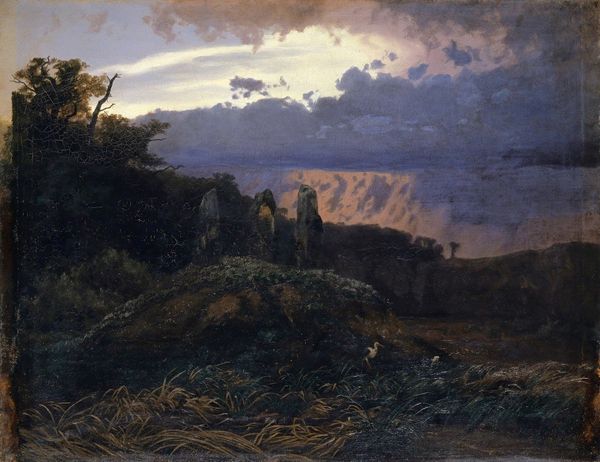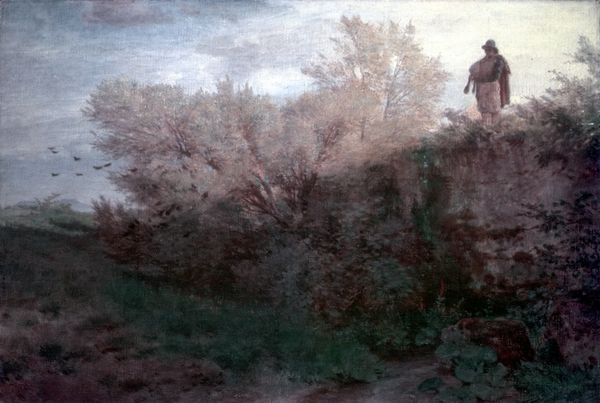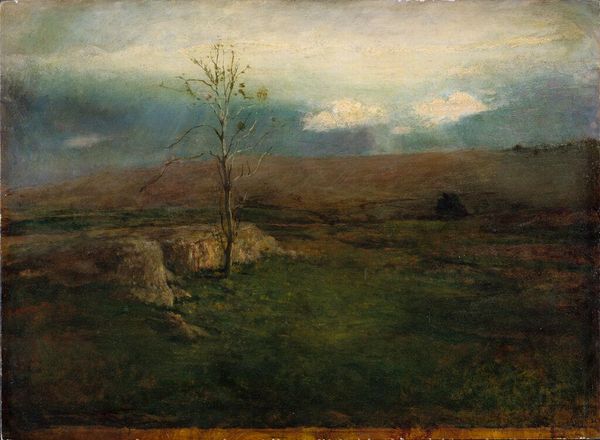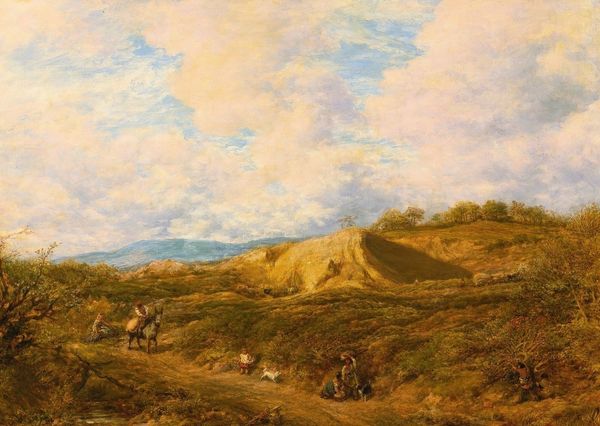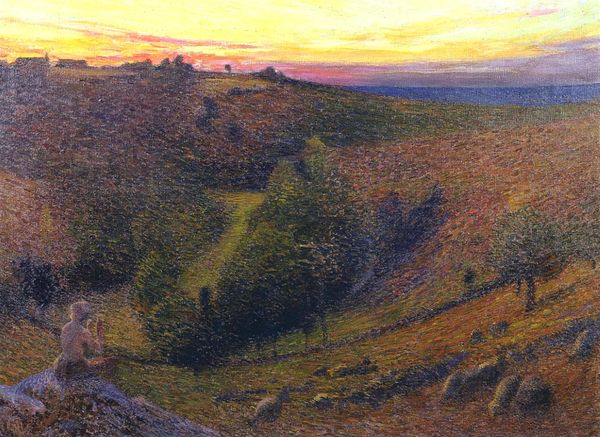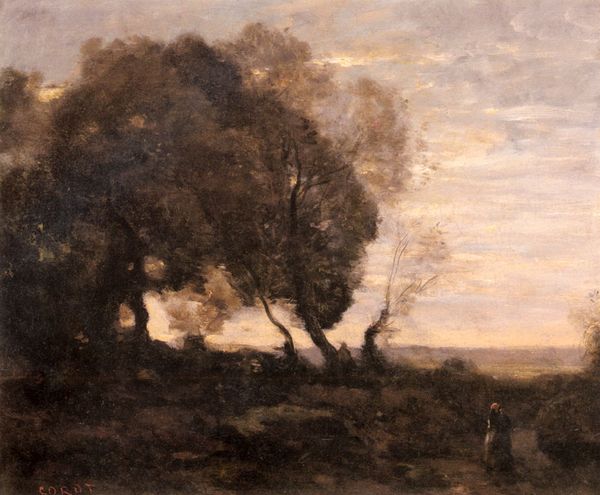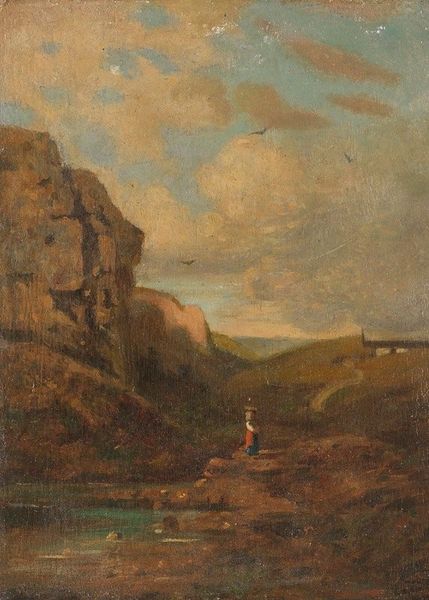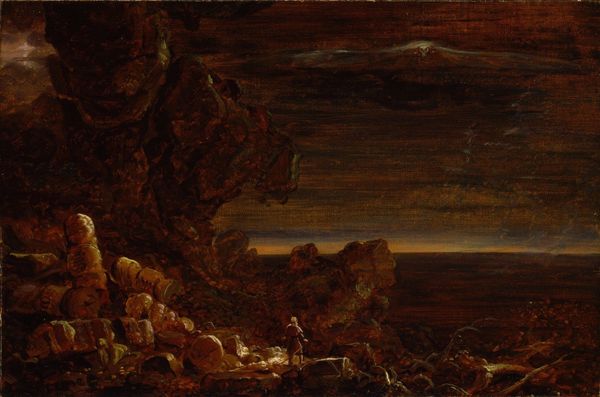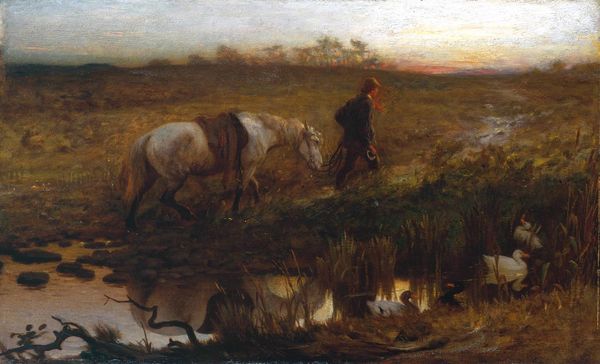
Dimensions: support: 584 x 870 mm
Copyright: CC-BY-NC-ND 4.0 DEED, Photo: Tate
Curator: Thomas Hope McLachlan, active in the latter half of the 19th century, is the artist behind this work. Called "Evening Quiet", it evokes a sense of pastoral calm, wouldn’t you agree? Editor: Immediately, I'm struck by how McLachlan uses a limited palette. The dominance of earth tones creates a visual harmony; the eye moves smoothly across the composition. Curator: Indeed. McLachlan was deeply engaged with the art world of his time, exhibiting at the Royal Academy, reflecting his place within the evolving landscape conventions of the period. Editor: Observe how the lone figure, the shepherd, is dwarfed by the landscape. He is integrated into the natural world through color and tonal resonance, almost disappearing into the scene. Curator: That's a fascinating point. This is a society undergoing massive industrialization and urbanization. His work appeals to a nostalgia for a simpler, rural past. Editor: The painting's structural simplicity is key. The horizontal layering of the planes emphasizes depth and creates a sense of receding space—a landscape for quiet contemplation. Curator: Ultimately, “Evening Quiet” offers a window into the late 19th-century imagination, a reflection on the changing relationship between humanity and nature. Editor: And as a canvas, it masterfully demonstrates how subtle variations in tone and texture can create a profoundly moving visual experience.
